Longneck Padaung Kayan people (Myanmar)
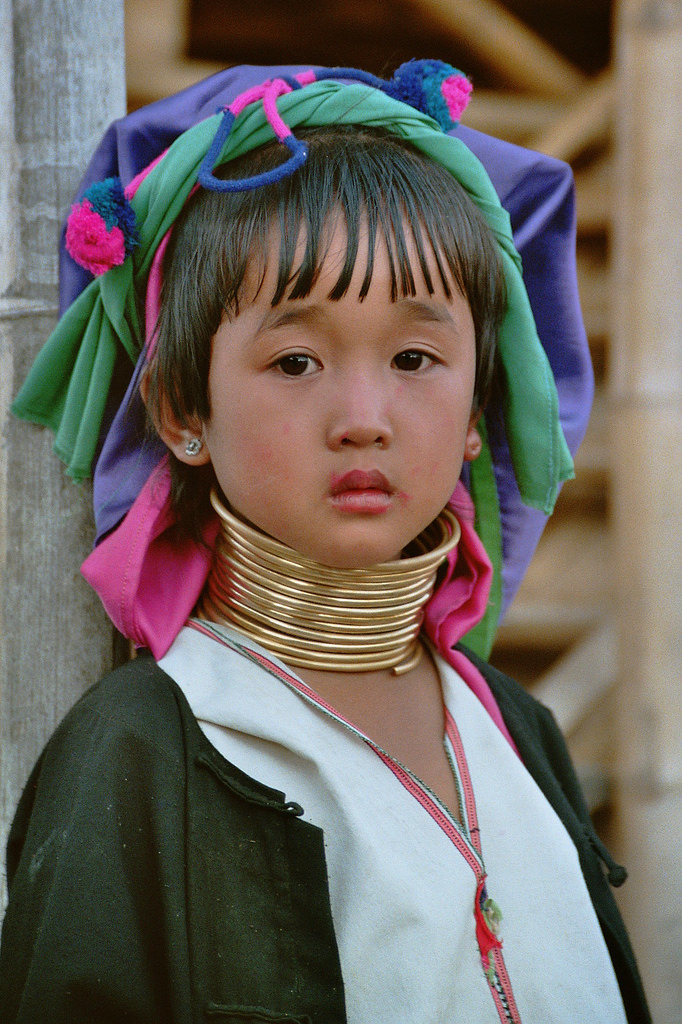 The Kayan are a sub-group of Red Karen (Karenni people), Tibeto-Burman ethnic minority of Myanmar (Burma). The Kayan consists of the following groups: Kayan Lahwi (also called Padaung, ပဒေါင်[bədàʊɴ]), Kayan Ka Khaung (Gekho), Kayan Lahta, Kayan Ka Ngan. Kayan Gebar, Kayan Kakhi and, sometimes, Bwe people (Kayaw).
The Kayan are a sub-group of Red Karen (Karenni people), Tibeto-Burman ethnic minority of Myanmar (Burma). The Kayan consists of the following groups: Kayan Lahwi (also called Padaung, ပဒေါင်[bədàʊɴ]), Kayan Ka Khaung (Gekho), Kayan Lahta, Kayan Ka Ngan. Kayan Gebar, Kayan Kakhi and, sometimes, Bwe people (Kayaw).
Longneck Padaung (Yan Pa Doung) is a Shan term for the Kayan Lahwi (the group in which women wear the brass neck coils). The Kayan residents in Mae Hong Son Province in Northern Thailand refer to themselves as Kayan and object to being called Padaung.
Present settlement of the Kayans
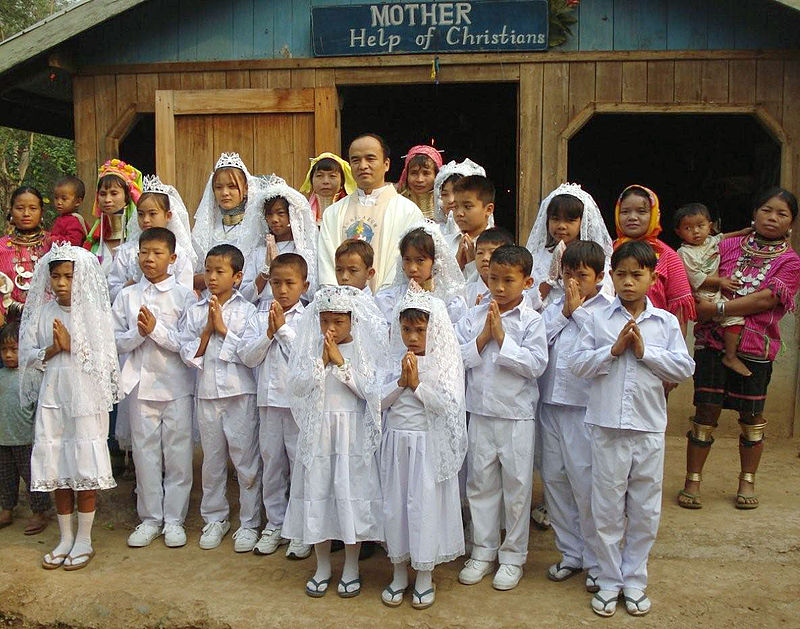 According to Kayan tradition the Kayan settled in the Demawso area of Karenni State (Kayah State) in 739 AD. Today, they are to be found in Karenni (Kayah) State around Demawso and Loikow, in the southern region of Shan State and in Mandalay’s Pyinmana and Karen’s Than Daung township.
According to Kayan tradition the Kayan settled in the Demawso area of Karenni State (Kayah State) in 739 AD. Today, they are to be found in Karenni (Kayah) State around Demawso and Loikow, in the southern region of Shan State and in Mandalay’s Pyinmana and Karen’s Than Daung township.
There are three Kayan villages in Mae Hong Son province in Thailand. The largest is Huay Pu Keng, on the Pai river, close to the Thai Myanmar border.
Culture
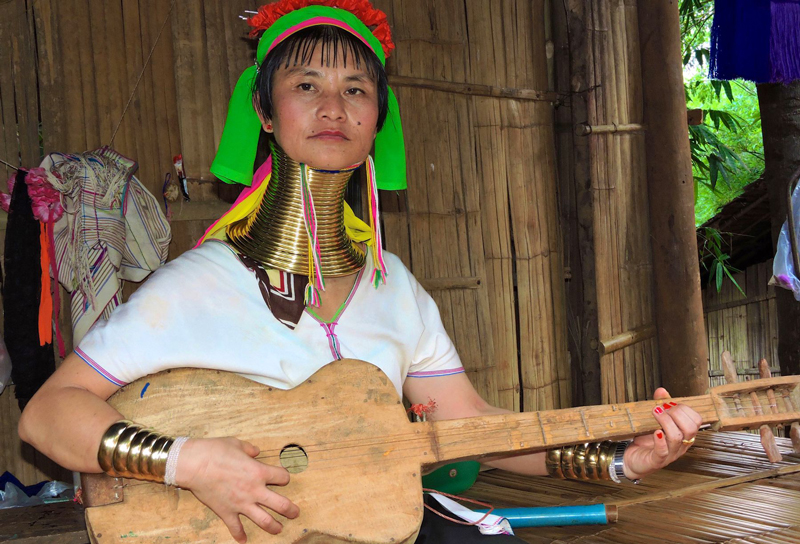
Brass coils
Women of the Kayan tribes identify themselves by their forms of dress. Women of the Kayan Lahwi tribe are well known for wearing neck rings, brass coils that are placed around the neck, appearing to lengthen it.
Girls first start to wear rings when they are around 5 years old. Over the years, the coil is replaced by a longer one and more turns are added. The weight of the brass pushes the collar bone down and compresses the rib cage. The neck itself is not lengthened; the appearance of a stretched neck is created by the deformation of the clavicle. Many ideas regarding why the coils are worn have been suggested, often formed by visiting anthropologists, who have hypothesized that the rings protected women from becoming slaves by making them less attractive to other tribes. It has also been theorised that the coils originate from the desire to look more attractive by exaggerating sexual dimorphism, as women have more slender necks than men. It has also been suggested that the coils give the women resemblance to a dragon, an important figure in Kayan folklore. The coils might be meant to protect from tiger bites, perhaps literally, but probably symbolically.
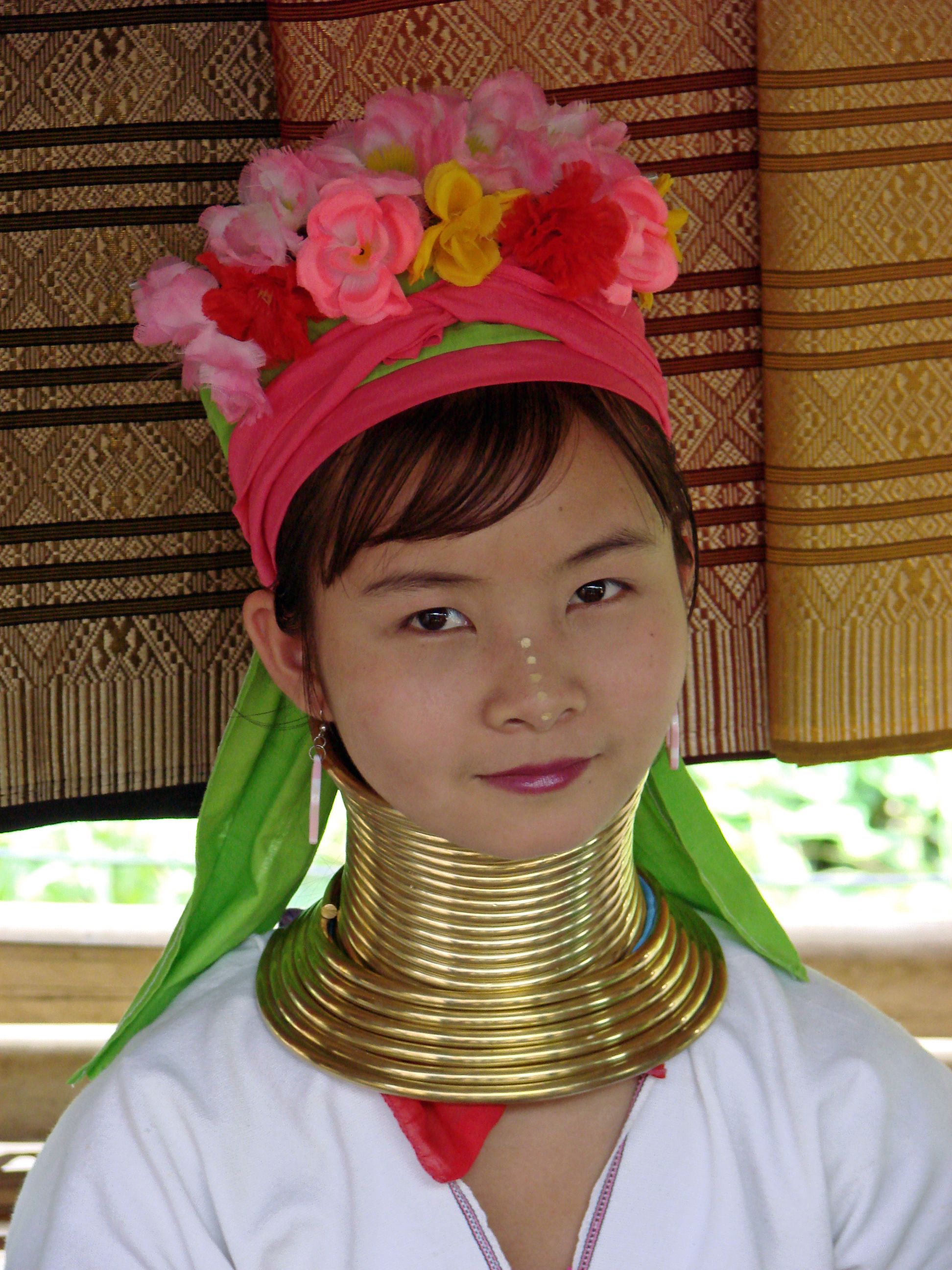 Kayan women, when asked, acknowledge these ideas, and often say that their purpose for wearing the rings is cultural identity (one associated with beauty).
Kayan women, when asked, acknowledge these ideas, and often say that their purpose for wearing the rings is cultural identity (one associated with beauty).
The coil, once on, is seldom removed, as the coiling and uncoiling is a lengthy procedure. It is usually only removed to be replaced by a new or longer coil. The muscles covered by the coil become weakened. Many women have removed the rings for medical examinations. Most women prefer to wear the rings once their clavicle has been lowered, as the area of the neck and collarbone often becomes bruised and discolored. Additionally, the collar feels like an integral part of the body after ten or more years of continuous wear.
Traditional religion
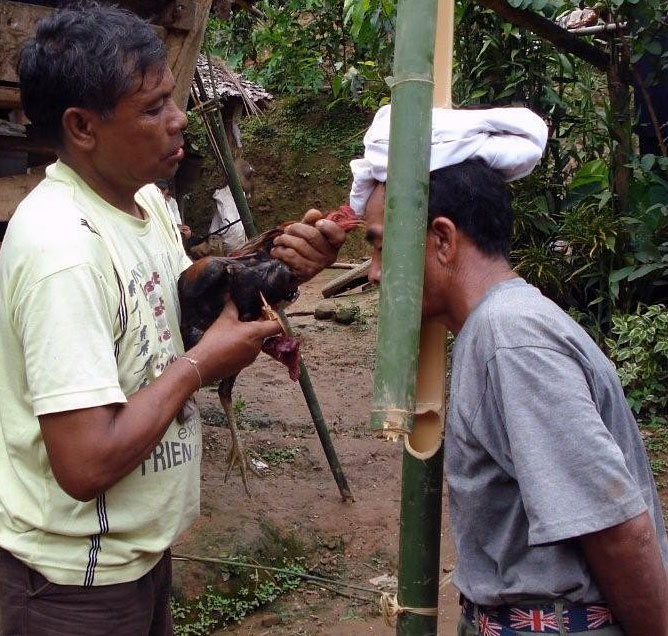 The Kayans’ traditional religion is called Kan Khwan, and has been practiced since the people migrated from Mongolia during the Bronze Age. It includes the belief that the Kayan people are the result of a union between a female dragon and a male human/angel hybrid.
The Kayans’ traditional religion is called Kan Khwan, and has been practiced since the people migrated from Mongolia during the Bronze Age. It includes the belief that the Kayan people are the result of a union between a female dragon and a male human/angel hybrid.
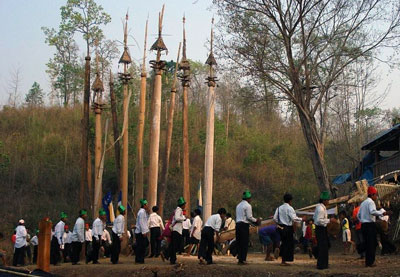 The major religious festival is the three-day Kay Htein Bo festival, which commemorates the belief that the creator god gave form to the world by planting a small post in the ground. During this festival, held in late March or early April, a Kay Htoe Boe pole is erected and participants dance around the pole. This festival is held to venerate the eternal god and creator messengers, to give thanks for blessings during the year, to appeal for forgiveness, and pray for rain. It is also an opportunity for Kayan from different villages to come together to maintain the solidarity of the tribe.
The major religious festival is the three-day Kay Htein Bo festival, which commemorates the belief that the creator god gave form to the world by planting a small post in the ground. During this festival, held in late March or early April, a Kay Htoe Boe pole is erected and participants dance around the pole. This festival is held to venerate the eternal god and creator messengers, to give thanks for blessings during the year, to appeal for forgiveness, and pray for rain. It is also an opportunity for Kayan from different villages to come together to maintain the solidarity of the tribe.
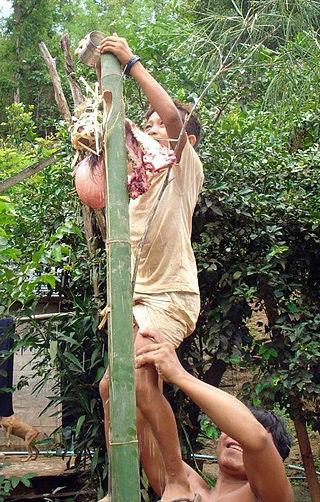 The Kayan have a strong belief in augury and nothing is done without reference to some form of divination, including breaking thatch grass, but most importantly consulting the chicken bones.
The Kayan have a strong belief in augury and nothing is done without reference to some form of divination, including breaking thatch grass, but most importantly consulting the chicken bones.
In present times, the annual Kay Htein Bo festival is always accompanied by a reading of the chicken bones to predict the year ahead. Fowl bone prognostication can be witnessed in the Kayan villages in Thailand’s Mae Hong Son province during the annual festival and during “Cleansing Ceremonies” which are held when a family has encountered ill fortune. Dreams are also used to make predictions.
Current religious practices
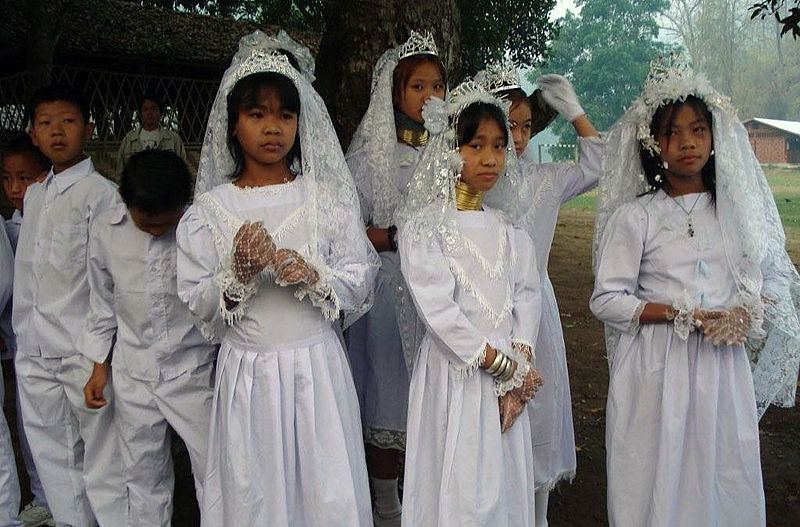 Although many of the Kayan still participate in these traditional festivals, in the 19th Century Italian missionaries worked amongst them for many years and today the majority of Kayan and Kayaw people are Roman Catholics. Statistics published in 2005 lists 306 Kayan villages, out of which 209 are Roman Catholic, 19 Kan Khwan, 32 Baptist, and 44 Buddhist, of which 2 belong to the Byamaso civil society organization.
Although many of the Kayan still participate in these traditional festivals, in the 19th Century Italian missionaries worked amongst them for many years and today the majority of Kayan and Kayaw people are Roman Catholics. Statistics published in 2005 lists 306 Kayan villages, out of which 209 are Roman Catholic, 19 Kan Khwan, 32 Baptist, and 44 Buddhist, of which 2 belong to the Byamaso civil society organization.






Like!! I blog quite often and I genuinely thank you for your information. The article has truly peaked my interest.